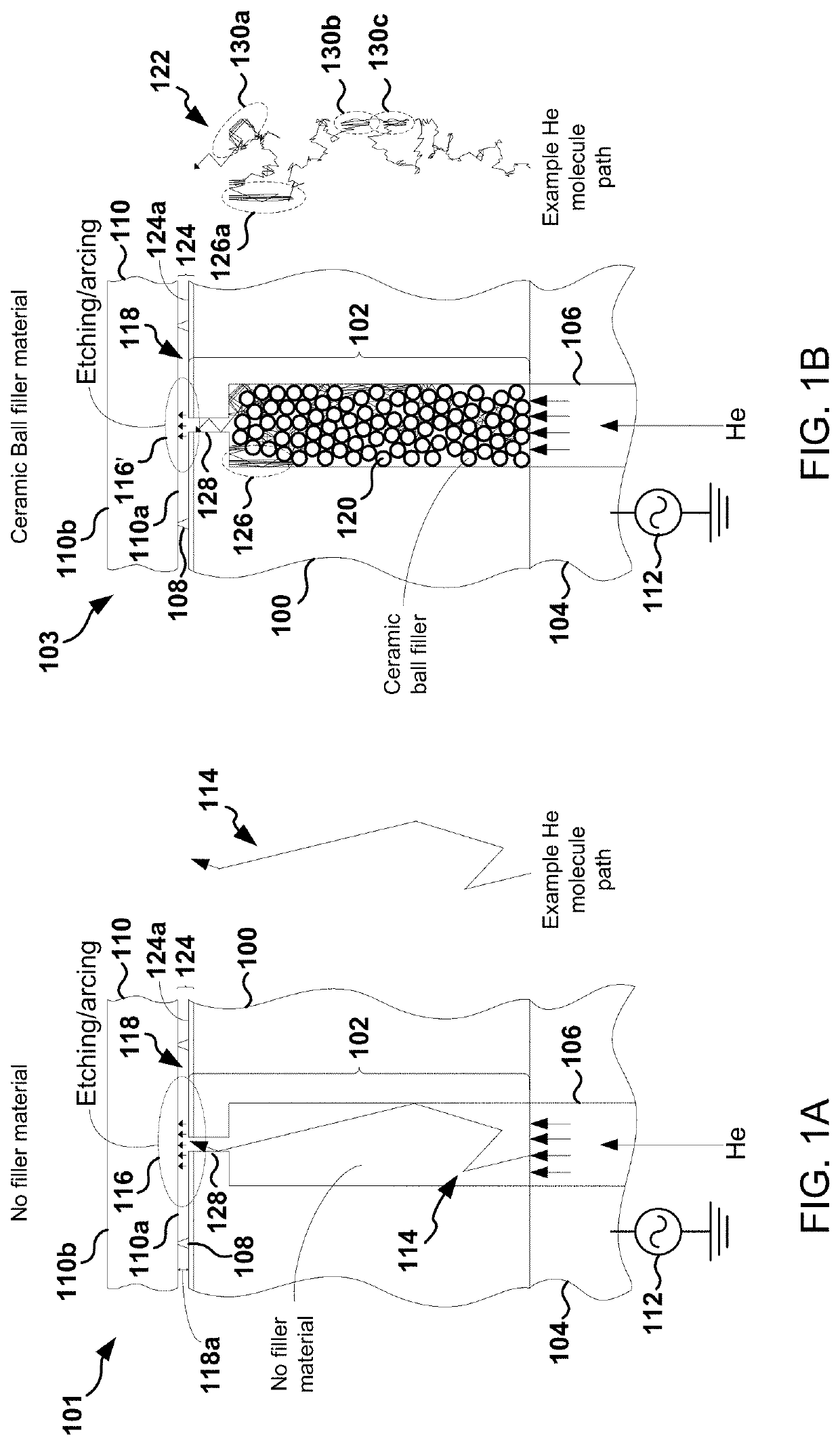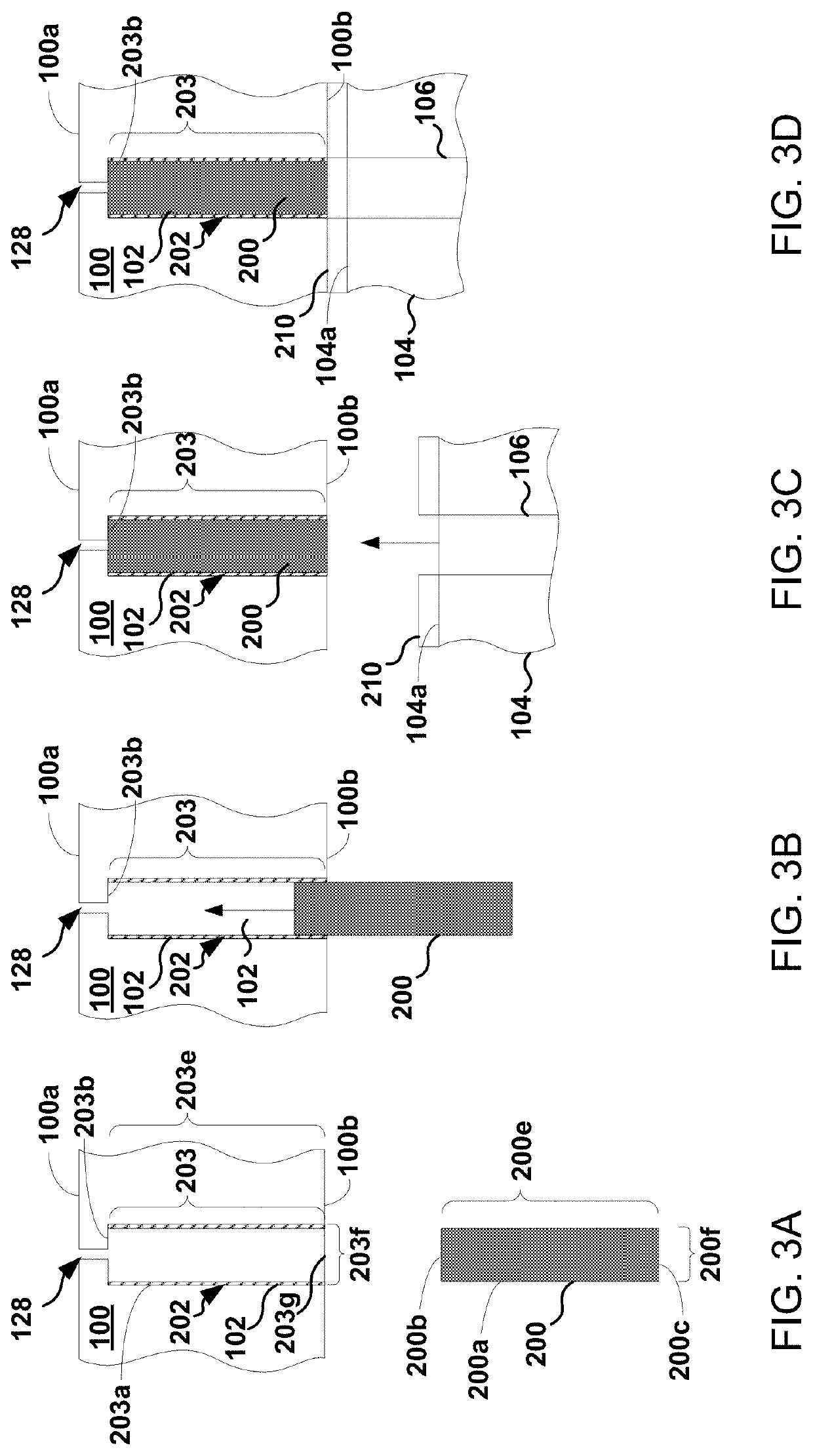Ceramic foam for helium light-up suppression
a technology of helium light-up and foam, which is applied in the direction of electrical equipment, basic electric elements, electric discharge tubes, etc., can solve the problems of electrical discharge, ignition damage to esc and/or other chamber components, etc., to reduce the overall kinetic energy of gas, reduce the probability, and reduce the mean free path of thermal conductance gas
- Summary
- Abstract
- Description
- Claims
- Application Information
AI Technical Summary
Benefits of technology
Problems solved by technology
Method used
Image
Examples
Embodiment Construction
[0024]The following embodiments describe systems, methods, and devices for eliminating thermal conductance gas light-up within an ESC. Embodiments presented described solutions for eliminating arcing in the ESC, and for solving the potential problem of gas (e.g., He) light-up, by forming and using ceramic foam plugs inside gas delivery channels where arcing and lighting-up have been found to occur within the ESC.
[0025]ESCs used in plasma reactors distribute helium (He) as a thermal transport material between the chuck surface and backside of a clamped wafer. Helium is distributed through delivery holes in a dielectric upper portion of the ESC. At high, or even modest bias voltages, helium gas in the delivery holes can break down (e.g., ionize) and become plasma. As a result, etching of the backside of the wafer may occur. In certain circumstances, arcing between the baseplate of the ESC and the wafer may also occur. Inadvertent etching of the backside of the wafer produces visible m...
PUM
| Property | Measurement | Unit |
|---|---|---|
| porosity | aaaaa | aaaaa |
| pore sizes | aaaaa | aaaaa |
| porosity | aaaaa | aaaaa |
Abstract
Description
Claims
Application Information
 Login to View More
Login to View More - R&D
- Intellectual Property
- Life Sciences
- Materials
- Tech Scout
- Unparalleled Data Quality
- Higher Quality Content
- 60% Fewer Hallucinations
Browse by: Latest US Patents, China's latest patents, Technical Efficacy Thesaurus, Application Domain, Technology Topic, Popular Technical Reports.
© 2025 PatSnap. All rights reserved.Legal|Privacy policy|Modern Slavery Act Transparency Statement|Sitemap|About US| Contact US: help@patsnap.com



